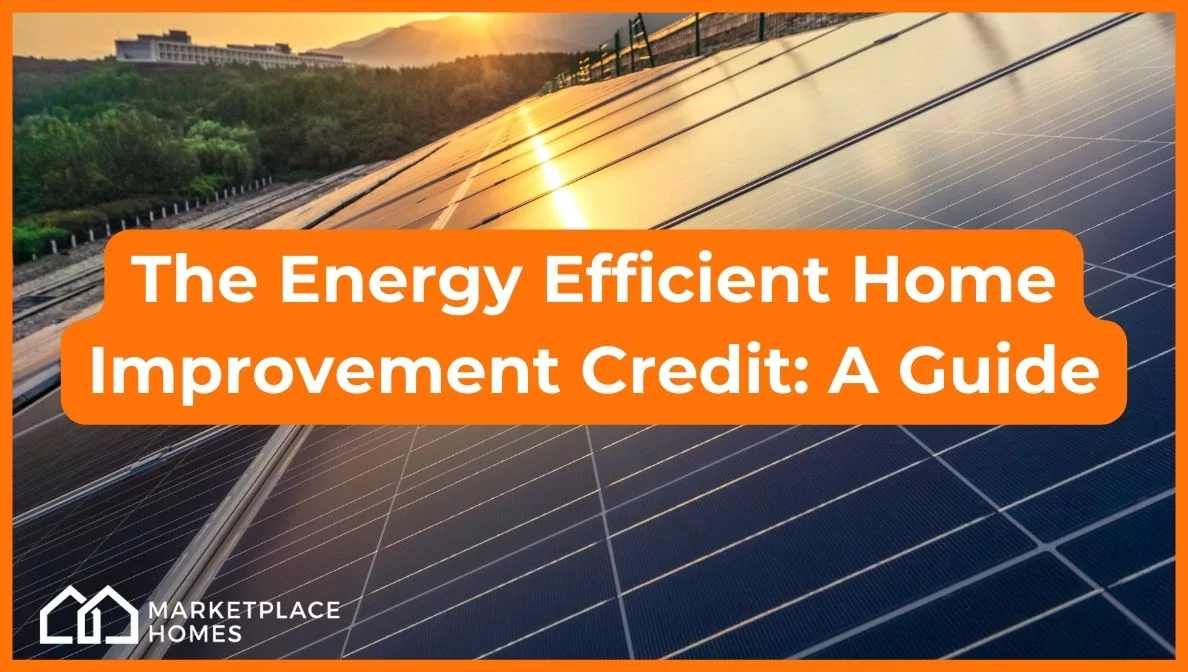What’s in the Energy Efficient Home Improvement Credit?
If you made a qualifying improvement to your home to promote energy savings in your home in 2023, you can potentially claim some lucrative energy tax credits. The IRS has incentivized upgrades like energy star heat pumps and exterior doors to get more homeowners to make energy efficiency improvements nationwide.
How can you verify that the improvements you made during the 2023 tax year can be claimed when you file income tax this spring? This short guide will give you a general overview about what the IRS says about the Energy Efficient Home Improvement Credit for taxpayers filing for the 2023 tax year.
- Disclaimer: For Informational purposes only. This content is an introductory guide. For the most up to date and accurate tax information, please consult a tax professional.
The Energy Efficient Home Improvement Tax Credit: Key Takeaways
Short on time? Here are the major points we will cover in this blog post:
It’s nonrefundable, which means that you can’t get back more on the credit than you owe, and you can’t apply extra credits to future tax years.
Timeline for 2023 filing: Only qualified home improvements, expenses, and home energy audits made between Jan 1, 2023 to Dec 31, 2023 can apply to this tax credit when you file for 2023 this spring.
- Fun fact: There is still time to reap these benefits in the coming years. You can claim the maximum annual credit for specific expenses (see the next items below) every year in which you make eligible improvements until 2033.
What you can get: The maximum credit amounts are:
- $1,200 for energy property costs.
- $1,200 for certain energy efficient home improvements.
- $250 for a door with a maximum of $500 for all doors installed in 2023.
- $600 cap for all new qualified windows.
- $150 for home energy audits.
- $2,000 per year for qualified heat pumps, biomass stoves, or biomass boilers.
How do you claim the Energy Efficient Home Improvement Credit?
To claim the credit, you can make an appointment with a tax professional, e-file a return through an online service like TaxAct, or turn in your tax return traditionally via paperwork at your local library or other places that provide tax information. Regardless of the path you take, you can claim this credit through filing Form 5695, Residential Energy Credits Part II, with your tax return.
When filing, it’s essential that you claim the credit for the tax year in which the property was installed. Purchasing the unit isn’t enough, but you need records of a full installation in the year 2023. Since you can be audited for your tax return, it’s crucial to keep such records in case the IRS needs more information in the future.
What are the Qualified Expenses and Credit Amounts?
There are a variety of home improvements for which you can get tax credits when they meet certain energy efficiency standards. All installations must be new, not second-hand. Here are the specific credit limits for each expense.
1. Windows, Doors, and Sealing
Windows, doors, and sealing, also known as “building envelope components,” must have an expected life span of 5 years at minimum.
- Energy-Star Exterior doors can get $250 credited per door with a $500 total credit possible, regardless of how many doors you install.
- Energy Star Exterior windows and skylights all have a $600 limit. These must meet Energy Star’s Most Efficient certification requirements.
- Insulation and air sealing gets a maximum credit of $1,200. These can include materials or systems that meet International Energy Conservation Code (IECC) standards that were in effect 2 years before their installation. So, if you install insulation in 2026, it must meet 2024 standards or later.
Note: You can’t write off the labor costs associated with installing building envelope components.
2. Home Energy Audits
You can get up to $150 back when you conduct a home energy audit for your primary residence. To qualify, these conditions must be met:
- A complete written report and inspection that identifies all the money-saving factors possible with your home.
- A home energy auditor must conduct the inspection and prepare the report according to IRS standards.
3. Residential Energy Property
Residential energy property, like central air conditioners, can get a credit up to $600 per item. These costs may include the cost of installation. Property that is qualified includes:
- Central air conditioners
- Natural gas, propane, or oil water heaters
- Natural gas, propane, or oil furnaces and hot water boilers
- Oil furnaces or hot water boilers can potentially qualify (check other efficiency criteria.)
- The costs of electrical components required to support residential energy property that meet the National Electric Code, with a capacity of 200 amps and more, also qualify. For each item, there is a $600 limit.
- Panelboards
- Sub-panelboards
- Branch circuits
- Feeders
4. Heat Pumps, Biomass Stoves, and Boilers
Any heat pump, boiler, or biomass stove that you install in your primary residence with a thermal efficiency rating of at least 75% qualifies for a credit up to $2,000 annually. You can also include installation costs with this expense. These include:
- Electric or natural gas heat pumps that meet IRS qualifications.
- Electric or natural gas heat pump water heaters that meet IRS qualifications.
- Biomass stoves and boilers that meet IRS qualifications.
For heat pumps, there are additional qualifications depending on where you live. Check out Energy Star’s cheat sheet and list of qualified heat pumps here.
5. Caveat: Subsidies, Rebates, and Incentives, and Other Restrictions
When claiming this credit, you must factor in any subsidies, rebates, and other incentives received. This purchase price adjustment is important to ensure that your taxes are accurate and honest, protecting you from any penalties during an audit. If you are unsure of what to do, please consult a tax professional.
Note: This credit isn’t applicable to property that is used solely for business purposes, however you can claim it if you use part of your home for business. If you use up to 20% of your home for business, you can claim the full credits. However, if you use more than 20% of your home for business, the credit amounts are different.
Use the Energy Efficient Home Improvement Credit!
If you made qualified improvements to your home in 2023, take advantage of all these awesome write offs. While these are not refundable, they can decrease or eliminate any taxes owed!
Alicia Persson is a Content Strategist SEO writer at Marketplace Homes, utilizing previous years of experience on real estate teams that specialized in investments and property management. Before she joined Marketplace Homes, she was also a freelance writer for 7 years, leading to a specialization in real estate and home living content for boutique digital marketing agencies. During her writing years, she learned the basics of SEO and gained experience writing for many different clients, making her versatile at creating diverse content.
She is a proud University of Virginia master’s graduate and enjoyed her undergraduate years at the University of Mary Washington. When Alicia is not writing, she plays keytar and sings in a local 90’s rock cover band, or she spends time with her amazing family.


